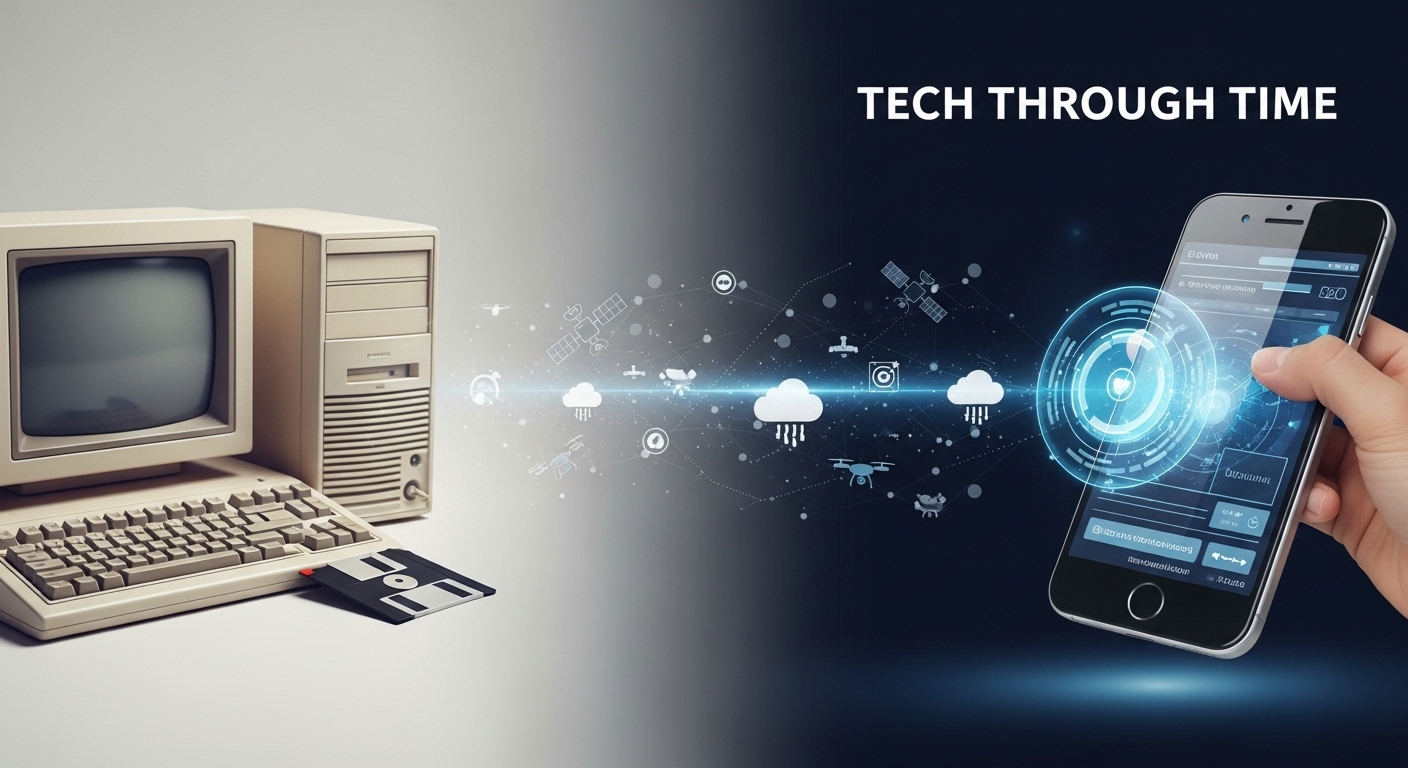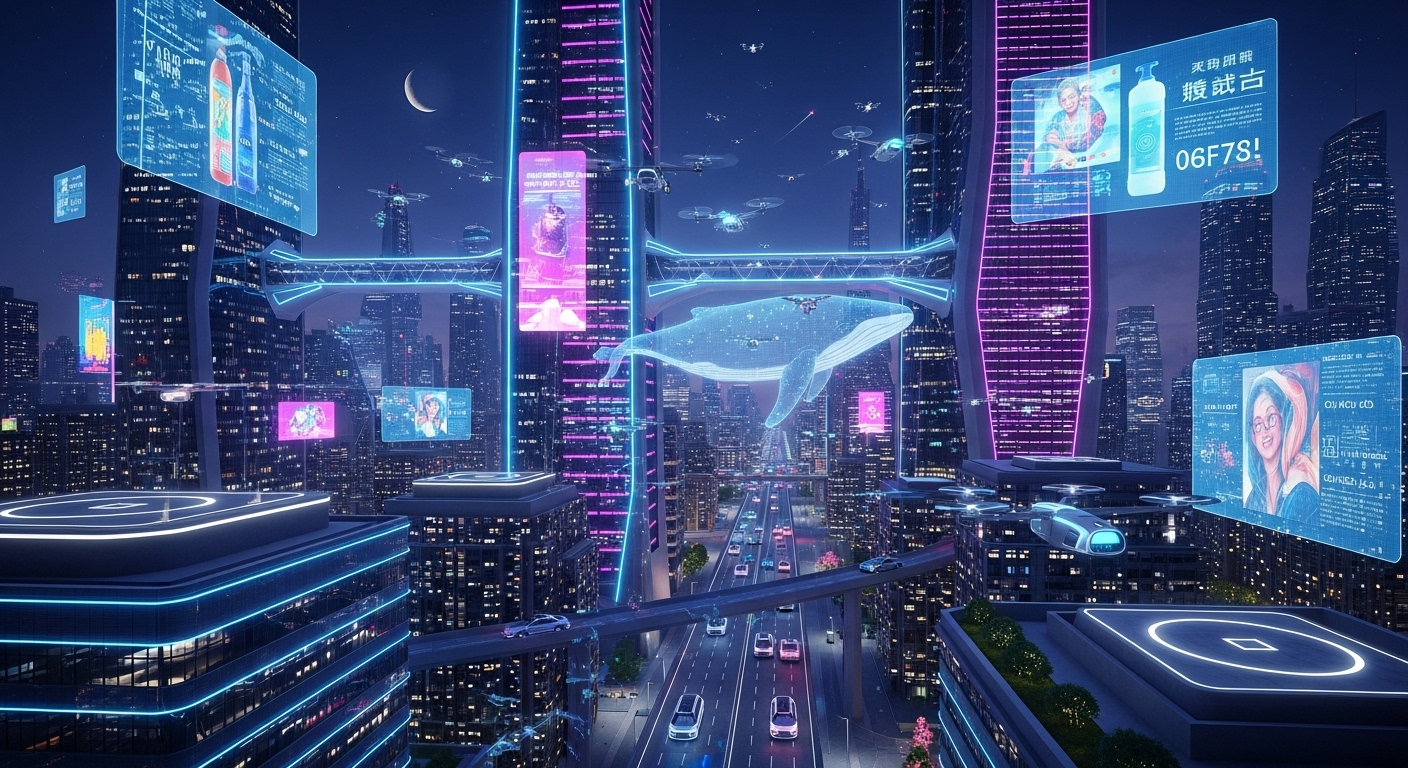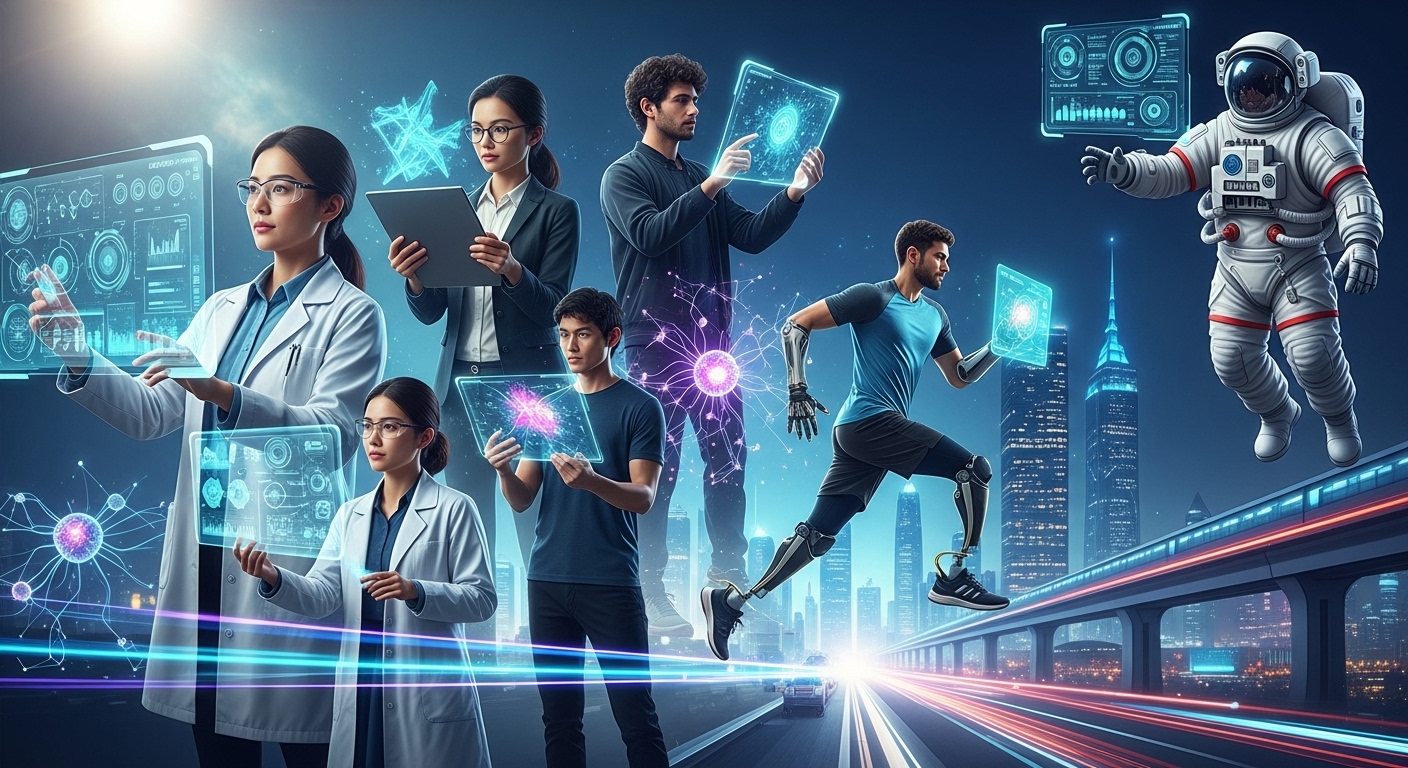Introduction to the Digital Age
Technology has become one of the most influential forces shaping modern civilization. It drives innovation, transforms industries, redefines communication, and reshapes how we work, learn, and interact with the world around us. From the early days of simple computing machines to today’s world of artificial intelligence, cloud computing, robotics, and quantum breakthroughs, technology has taken an extraordinary journey. This blog explores the vast landscape of tech, focusing on its evolution, current trends, future possibilities, and the impact it has on society and individual lives.
The Evolution of Technology
Early technology was all about solving basic human needs. In ancient times, tools were made of stones, metals, and wood to aid in hunting and farming. However, the technological revolution began in earnest with the invention of mechanical machines and later electrical devices. The first industrial revolution introduced steam engines and mechanized textile production. The second revolution focused on electricity, telecommunications, and mass manufacturing.
The third revolution brought computers and the internet into existence, leading to what we now call the digital age. Large computers shrank into personal devices, and later smartphones made technology accessible to people across the globe. The fourth industrial revolution is unfolding today, blending the physical, digital, and biological worlds with technologies like artificial intelligence, machine learning, robotics, and biotechnology.
Rise of Artificial Intelligence
Artificial intelligence is one of the most revolutionary fields in modern technology. It allows machines to learn from data, understand patterns, and make decisions. AI is not a single technology, but a combination of machine learning, neural networks, natural language processing, and computer vision. Its applications are incredibly diverse, from virtual assistants to predictive analytics in healthcare, finance, and transportation.
Machine learning algorithms train computers to identify patterns in large datasets. Deep learning, a subset of machine learning, uses neural networks inspired by the human brain to make complex decisions. AI is being used in self-driving cars to perceive surroundings and make safe driving choices. In healthcare, AI helps in diagnosing diseases from medical images with astonishing accuracy.
Automation and the Future of Work
Automation is reshaping the job market. Machines and software are taking over repetitive and manual tasks, allowing humans to focus on creative and strategic work. Factories use robotic arms to assemble products with precision. Retail industries use automated billing systems and inventory management. Even in customer service, chatbots can handle simple queries while human agents deal with complex issues.
However, the rise of automation has led to concerns about job displacement. While some jobs may disappear, new roles in robotics, data analysis, AI training, and system maintenance are emerging. The future workforce will require skills like critical thinking, digital literacy, and adaptability.
Cloud Computing and Digital Transformation
Cloud computing has become the backbone of modern digital infrastructure. Instead of storing data and running applications on local machines, individuals and businesses now rely on remote servers hosted on the internet. This allows for scalable computing resources, cost efficiency, and easier collaboration.
Cloud services enable businesses to store vast amounts of data securely, access it from anywhere, and deploy software updates seamlessly. It has facilitated remote work, online education, and e-commerce. Digital transformation involves integrating such technologies into business processes to improve efficiency, customer experience, and innovation.
The Internet of Things and Smart Living
The Internet of Things refers to a network of interconnected devices that communicate and share data with each other. These devices range from smartphones and smartwatches to home appliances, vehicles, and industrial machines. IoT is revolutionizing everyday life by making homes smarter and cities more efficient.
Smart homes include devices like voice-controlled assistants, automated lighting, smart thermostats, and connected security systems. These devices learn users’ habits and adjust settings automatically for comfort and energy efficiency. In smart cities, sensors collect data to manage traffic flow, waste disposal, and energy consumption.
Blockchain and Digital Security
Blockchain technology gained attention with the rise of digital currencies. However, its applications go far beyond financial transactions. A blockchain is a decentralized digital ledger where data is recorded in blocks and linked in chronological order. The data is immutable, meaning it cannot be altered once added, making it reliable and secure.
Apart from cryptocurrency, blockchain is used in supply chain management to track products from origin to destination. It is used in digital identity systems to verify individuals securely. Its decentralized nature reduces the risk of cyberattacks on centralized servers.
Cybersecurity Challenges
As technology advances, so do cyber threats. Cybersecurity is now a critical part of digital development. Hackers use advanced techniques to steal data, spread malware, and disrupt services. Individuals, organizations, and governments are investing heavily in securing digital systems and protecting sensitive information.
Cyberattacks can result in financial loss, identity theft, and damage to reputation. Phishing attacks trick people into revealing passwords or financial details. Ransomware encrypts files and demands payment for their release. To combat these threats, cybersecurity experts develop firewalls, encryption methods, and artificial intelligence-based detection systems.
The Growth of Mobile Technology
Mobile technology has transformed how people interact with the world. Smartphones are now powerful computing devices capable of handling tasks once limited to desktop computers. Mobile apps allow users to communicate, shop, learn, work, entertain, and manage finances on the go.
The introduction of 4G and now 5G networks has boosted internet speed and reduced latency, enabling real-time online experiences. Mobile technology has created industries such as mobile gaming, app development, and social media influencing. It has also connected rural areas to global markets and education systems.
Social Media Impact on Society
Social media platforms have become central to communication and information sharing. They allow people to connect across distances, share thoughts, photos, and videos, and participate in global conversations. Social media has influenced politics, culture, education, and entertainment.
However, it also presents challenges like misinformation, cyberbullying, and privacy concerns. Algorithms analyze user behavior to show personalized content, which can lead to echo chambers where people only see content they agree with. Responsible usage and awareness are essential to harness its benefits while minimizing negative effects.
Virtual and Augmented Reality
Virtual reality and augmented reality are transforming how people experience the digital world. VR creates immersive digital environments using headsets that block out the physical world. AR overlays digital information onto the real world using smartphones or smart glasses.
These technologies are used in gaming, education, training, and even therapy. Medical students can practice surgeries in virtual environments. Architects use AR to visualize building designs in real spaces. VR helps treat phobias by exposing patients to controlled situations.
Quantum Computing and Future Breakthroughs
Quantum computing is an emerging technology that uses principles of quantum physics to process information. Unlike classical computers that use bits as 0s or 1s, quantum computers use quantum bits or qubits, which can exist in multiple states simultaneously. This allows them to solve complex problems much faster than classical computers.
Quantum computers could revolutionize fields such as cryptography, drug discovery, and climate modeling. While still in the experimental stage, researchers are making rapid progress. However, widespread use of quantum computing will require overcoming challenges related to stability, error correction, and cost.
Technology in Healthcare
Healthcare is one of the sectors most transformed by technology. AI helps diagnose diseases earlier and more accurately. Telemedicine allows doctors to consult patients remotely using video calls. Wearable devices monitor heart rate, sleep patterns, and physical activity, helping users stay healthy.
Robotic surgery enables high precision operation with minimal invasion. Electronic health records store patient information securely, improving coordination between doctors. Researchers use big data analytics to discover trends and develop new treatments. Technology also supports mental health with apps for meditation, therapy, and emotional support.
Education in the Digital Era
Technology has redefined education. Online learning platforms allow students to access courses from anywhere. Digital classrooms use smart boards, projectors, and interactive tools to make learning engaging. Students can collaborate on projects using cloud-based applications.
Artificial intelligence personalizes learning by analyzing student performance and providing tailored feedback. Virtual labs allow science students to conduct experiments without physical equipment. Technology breaks barriers of geography, making education accessible to people in remote areas.
Sustainable Technology and Green Innovations
As the world faces environmental challenges, technology plays a key role in finding sustainable solutions. Renewable energy sources like solar, wind, and hydropower are being used to reduce dependence on fossil fuels. Energy-efficient appliances and electric vehicles help reduce carbon emissions.
Smart grids manage electricity distribution more efficiently. Buildings with smart sensors adjust lighting and temperature to save energy. Researchers are developing biodegradable materials to replace plastic. Technology is also used in agriculture with precision farming, drones, and automated irrigation systems to conserve resources.
Ethical Issues in Technology
With great power comes great responsibility. Technology raises ethical questions about privacy, data usage, surveillance, and human rights. AI systems are trained on data that may contain biases, leading to unfair outcomes. Facial recognition technology can be misused for mass surveillance.
Governments and companies must establish rules and policies to ensure technology is used responsibly. Transparent algorithms, data protection laws, and ethical AI practices are necessary to build trust. Individuals also have a role in using technology wisely and protecting their digital footprint.
Future of Transportation
Technology is changing how people travel. Electric cars are becoming popular due to their eco-friendly nature and lower fuel costs. Autonomous vehicles use sensors and AI to navigate roads without human drivers. Hyperloop systems aim to transport passengers at high speeds through low-pressure tubes.
Drones are used for delivering packages and helping in disaster relief operations. Smart traffic management systems reduce congestion and pollution. Public transport apps provide real-time updates, making travel more efficient and convenient.
Entertainment and Digital Media Evolution
The entertainment industry has been transformed by digital technology. Streaming services allow users to watch movies, shows, and live events on demand. Video games have evolved with realistic graphics, online multiplayer modes, and virtual reality integration.
Music production has moved to digital platforms, enabling artists to create and share songs from home studios. Social media influencers and content creators now shape trends and reach millions without traditional media channels. Technology has blurred the boundaries between creators and consumers.
Space Exploration and Technology
Space exploration has advanced significantly thanks to modern technology. Satellites provide communication, weather forecasting, and navigation services. Space agencies and private companies are developing spacecraft for missions to the moon, Mars, and beyond.
Rovers on Mars send images and scientific data back to Earth. Telescopes observe distant galaxies and stars. Reusable rockets have reduced the cost of space travel. Technology is also being developed for space mining and building habitats on other planets.
The Human Connection with Technology
Despite technological advances, the human element remains central. Technology is a tool created to improve life, but it must be balanced with emotional well-being, social interaction, and ethical responsibility. Overdependence on devices can lead to isolation and mental stress. Therefore, digital wellness is essential.
Mindful usage of technology includes setting screen time limits, taking breaks, and engaging in real-life activities. Parents and educators must guide children in using technology safely and responsibly. A harmonious balance between the digital and physical world ensures that technology serves humanity rather than controlling it.
Conclusion
Technology continues to evolve rapidly, touching every aspect of human life. From artificial intelligence and quantum computing to renewable energy and space exploration, it offers endless possibilities. However, with these advancements come responsibilities and challenges. By embracing innovation while maintaining ethical values and human connection, society can ensure a future where technology benefits everyone.



